Hallstattats are Europeans of the Iron Age. Ancient graves tell (part 1)
A typical sword of Hallstatt culture with a characteristic top with curls-volutes. (Archaeological Museum, Krakow)
Your name, as is often the case with historical monuments, this culture was received by chance. Just near the city of Hallstatt in northwestern Austria, where rock salt was mined from time immemorial, in 1846 an ancient burial ground was found. Moreover, he was discovered by the ordinary miner Johann Ramsauer, and he (that's how it happens!) In 1846-1864. He was the first to research and describe the artifacts found here. Archeology at that time was akin to treasure hunting and science, in fact, was not yet. However, Ramsauer, apparently, was prone to systematics, so he did not just dig it out, but also described the objects found and their location in the burials. Reports of the findings aroused interest, so the excavation of the cemetery continued even later, so that by the end of the 2th century, about XNUMX thousand burials were investigated, containing both corpse and corpse burials. The volume of finds was such that it allowed to highlight their characteristic features. And it became clear that a previously unknown ancient culture was discovered!
Reconstruction of the Hallstatt burial in the mound. (National Museum, Nuremberg)
Later, in other places, burials with similar objects were found, which allowed the Swedish cultural historian Hans Hildebrand to introduce into scientific use such a term as the “Hallstatt group”. Then the German archaeologist Paul Reinecke began to use the term "Hallstatt time." Finally, the term “Hallstatt culture” was proposed by Austrian archeologist Moritz Gernes in the year 1905. Since that time, this name has become used and exists in scientific practice today.
Artifacts Hallstatt culture. (Museum of Archeology George Garrett, Vesoul, Haute-Saon, Franche-Comte, Burgundy, France)
But there is still no single periodization in the Hallstatt culture. The same Paul Reinecke still in 1902 year divided it into four periods, giving them letters by letters of the alphabet: A, B, C, D. However, the first two periods, that is, Hallstatt A (1200 – 1100 years BC) and Hallstatt B (1100 – 800 BC) are now attributed to the late Bronze Age, and not to the Hallstatt time per se. French historians have offered their own version of periodization: C - early Hallstatt, D1 and D2 - medium and D3 - late. From about 480 BC. er (the year of the Marathon Battle in Greece) the Laten Era has already begun, which replaced the Hallstatt.
And if the Hallstatt culture was predominantly Celto-Illyrian, the Latent culture united Celts, Dacians and Thracians, and the Celto-Illyrian community now occupied a relatively small area in Italy. The main territories where Hallstatt culture was spread were Lower Austria, Slovenia, regions of northern Croatia, and also partly the Czech Republic and Slovakia - that is, lands inhabited by the tribes of ancient Illyrians. In Western Austria, in the south of Germany, in northern Switzerland, in a number of areas (mostly western) of France, the Celts settled. In addition, the settlements of Hallstattés existed in Italy in the eastern region of the Po Valley, in Hungary, and even here and there in Western Ukraine.
Hallstatt masters produced products not only for intra-tribal needs, but also for sale, and they are found quite far from the place of manufacture, for example, they were found in the Baltic States. Interesting novelties such as horse bronze bits and harnesses, pendants decorated with ornaments, swords and daggers with antenna top handles are associated with the Hallstattzas. Moreover, the very first iron objects found in the Baltic States (they were found in the burials found in Pomerania, East Prussia and in Western Lithuania) got there through the tribes belonging to the Lusatian culture and, consequently, the Hallstatts traded with them, and those in turn resell their products further east. Back Galtstatts received a "sun stone" - amber, which themselves, apparently, did not mine, but received from the tribes who lived on the shores of the Baltic Sea.
Hallstatt ceramics, approx. 800-550 BC. (Museum of Western Bohemia (West Bohemian Museum), Pilsen)
The study of Hallstatt culture was greatly helped by the fact that in the areas of its distribution there were many salt mines. They had a specific microclimate with a preservative effect. Therefore, in them, up to the present, as well as in the Danish peatlands, corpses, their clothes, and leather goods, not to mention wood, have survived. All this allowed us to confidently date certain finds of the Hallstatt era.
It is noted that the transition from bronze metallurgy to iron in the area of distribution of the Hallstatt culture was carried out gradually, so that in 900 — 700. BC. er Bronze and iron tools got along well with each other, and the bronze tools numerically prevailed over the iron ones. The land was cultivated with the help of a plow, and it was here that the iron plow showed its advantage over the bronze one.
Layout Hallstatt farm. (Goibodenmuseum in Straubing (Lower Bavaria))
The most common type of settlement was a fortified village, but fortified mainly by a log fence, which, however, had a proper layout of streets. Nearby were salt mines and copper mines. In the villages or close to them were located iron-smelting workshops and forges.
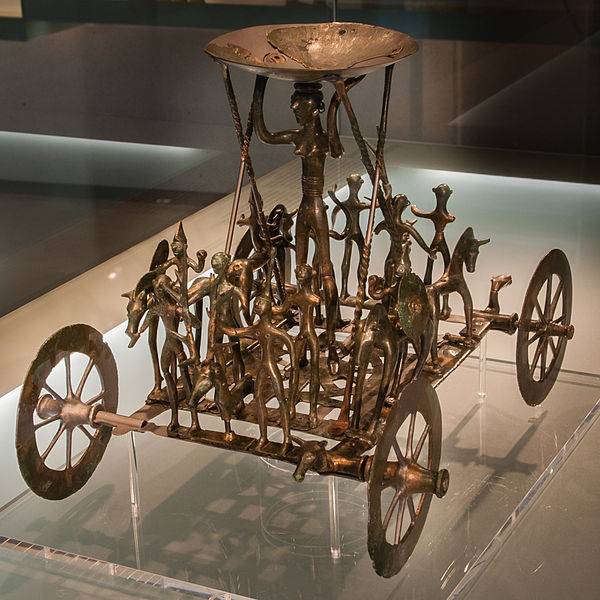
The Bronze Chariot of Stretweg is one of the most famous artifacts of Hallstatt culture. Exhibited in the castle Eggenberg in Graz, and its exact copy adorns the Museum of the city of Judenburg.
As for the topic weapons - which traditionally interests visitors to the VO website, then the Hallstatts have said their word here too. In their burials they find long bronze and iron swords, that is, the weapons of individual fighters, since such swords require a large swing and it is difficult to fight with them in close formation. The most important thing is that the swords of the Hallstattans had a characteristic handle that made them easily recognizable. First of all, the Hallstatt swords had pommel on the arms in the form of a “hat” or an inverted bell.
Hallstatt iron sword with a bell-shaped bronze pommel and hilt. (Museum of Natural History, Vienna)
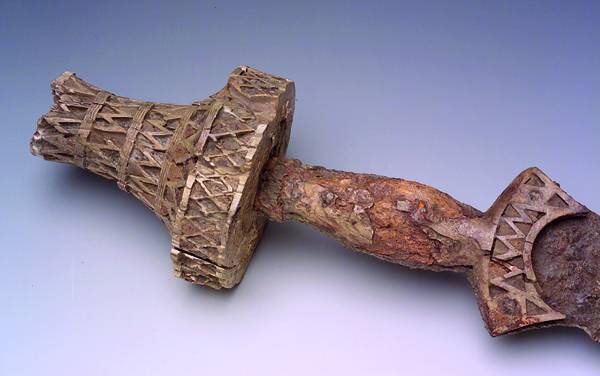
The handle of the Hallstatt sword. (Museum of Natural History, Vienna)
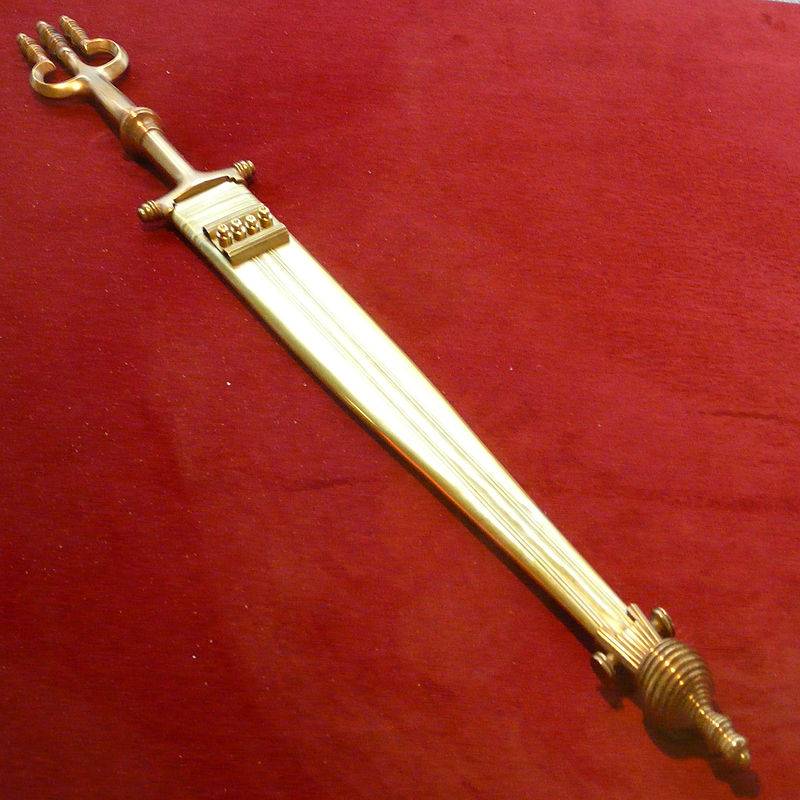
A replica of the Hallstatt sword in the exposition of the Neanderthal Museum in the Neanderthal Valley (Germany), the administrative district of Dusseldorf.
Another form of the pommel was an arc with "whiskers," coiled upward. This is the so-called “antenna top”, which is typical for Hallstattz. The same top tips often decorated their daggers. Axes, knives, and also iron and bronze tips of spears are found in the graves. Helmets were also bronze, conical in shape, but with wide flat fields, either hemispherical and with crests reinforcing their domed part. The shells were made from individual bronze plates, which were traditionally sewn onto the skin, but the Celts also used double-sided forged muscular-type cuirass.
Two-ridge helmet from the Archaeological Museum in Graz, Austria.
Among the finds in the burial grounds there are various forms of bronze ware, original buckles, brooches, hand-made ceramics, and necklaces made of opaque colored glass. Everything suggests that the art of the tribes of Hallstatt culture had an applied character, was ornamental and indulged in luxury. At the same time, they did not spare bronze, gold, glass, and bones for the departed; fibulae representing animals, golden neck hryvnias, belt bronze plaques with patterns carved on them are found in them. The dishes were distinguished by their bright murals of yellow and red paints, with multicolored geometric ornaments. Interestingly, the Hallstatts knew and used a potter's wheel. But not always! Often they sculpted vessels by hand and their quality did not make them worse.
Dagger with antenna top of the hands of Hallstatt culture. Museum Zemka Linz in Lower Austria).
They also had the imaginative art associated with the materialization of spiritual images: these were tomb steles, small figurines made of clay and bronze (for example, with images of people, horses, etc.), and even complex bronze compositions like the “chariot of Stretweg” with scene of sacrifice. A popular type of jewelery on pottery, belts and siduels (bronze truncated-conical buckets) was stamped or chased friezes, which depicted scenes from life: feasts, feasts, marching warriors, scenes of war, hunting and religious holidays.
Reconstruction of the cart Hallstatt time. (National Museum, Nuremberg)
Interestingly, with the commonality of the Hallstatt culture in certain areas of its distribution, there are some forms of burial. For example, sometimes the dead were buried in carts, or houses were built for them from stones, over which barrows were poured. By the way, all the burials speak of significant social stratification. Someone was buried under a mound along with a wagon, silver situles and gold brooches, and someone in a hole with one pot in my legs!
To be continued ...
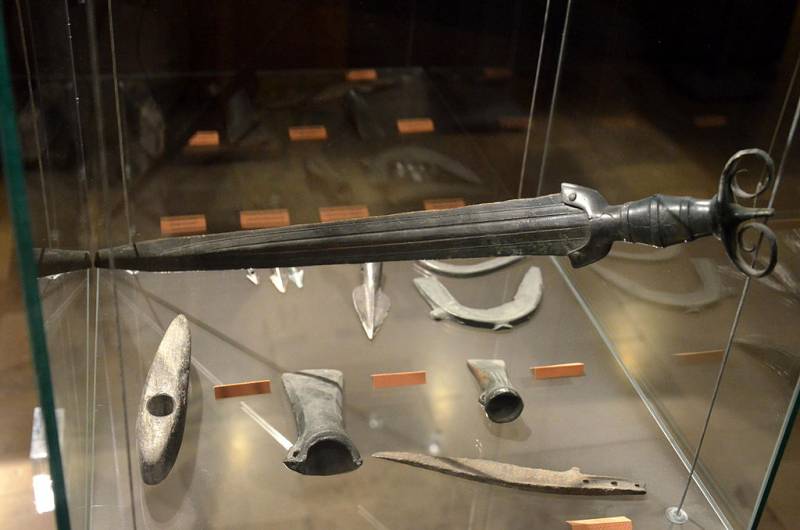
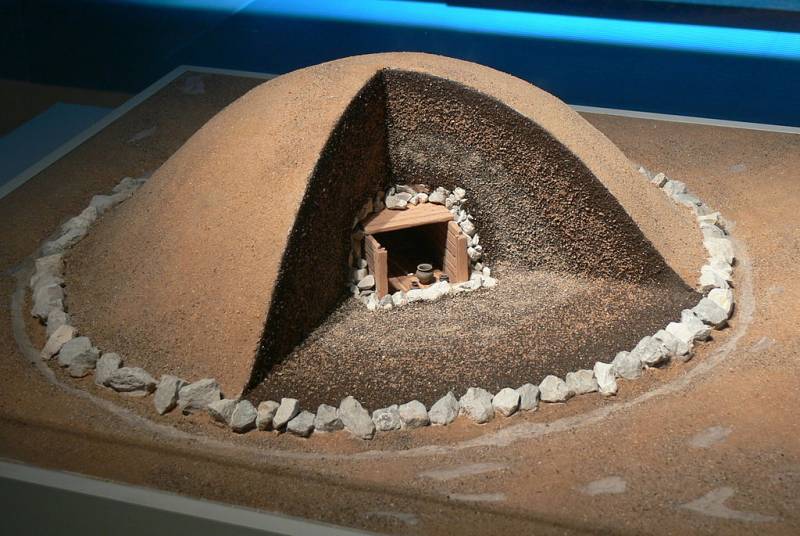
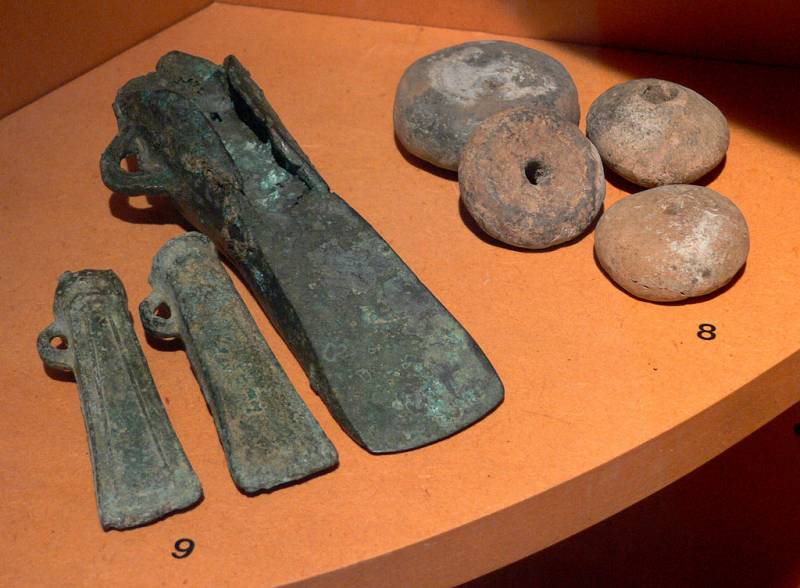
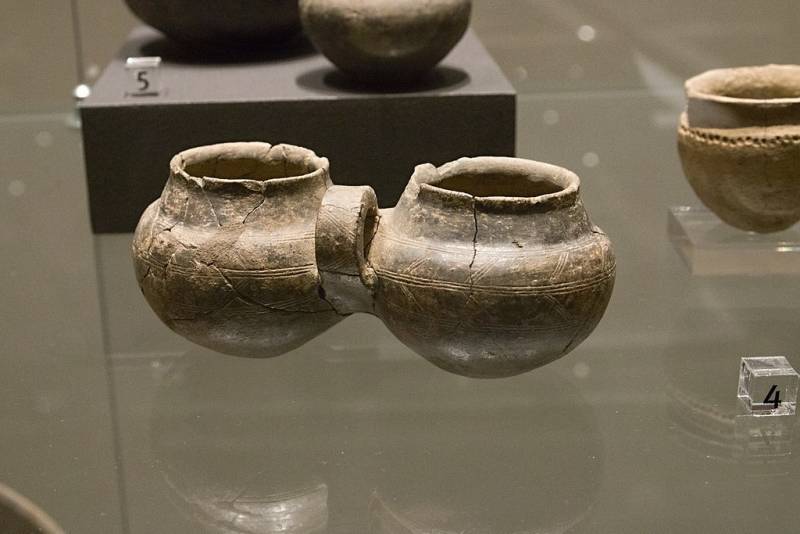
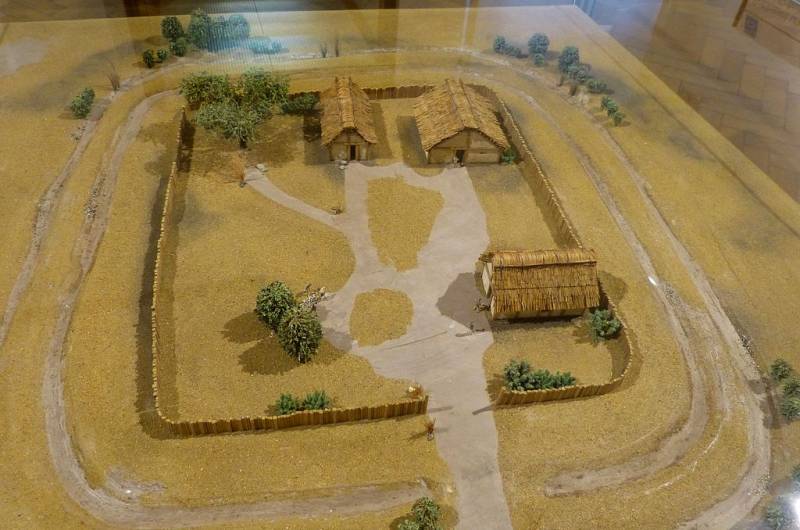
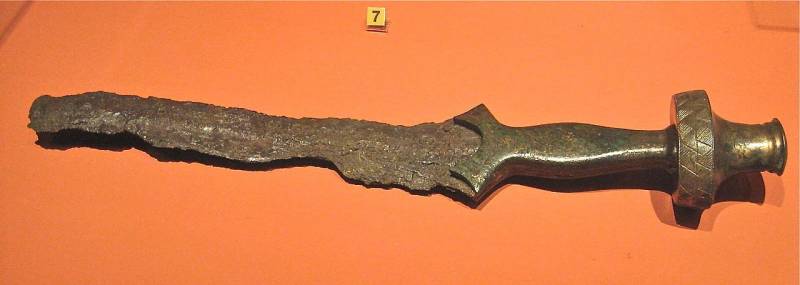
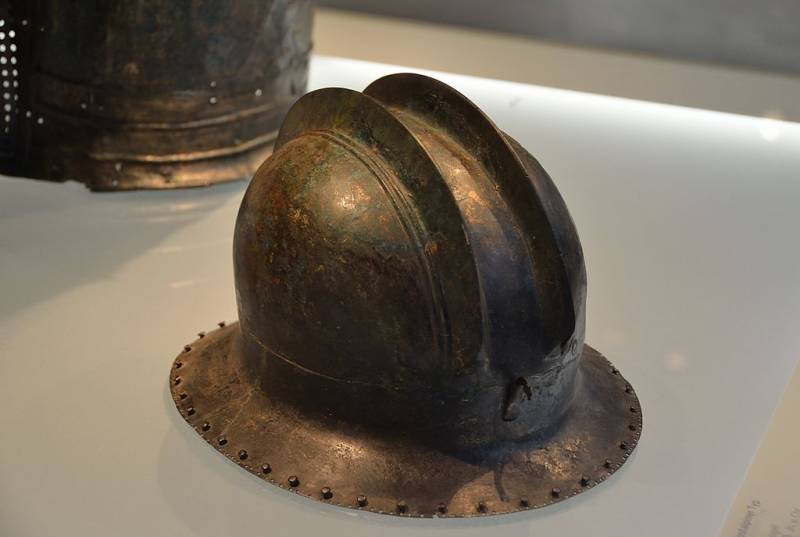
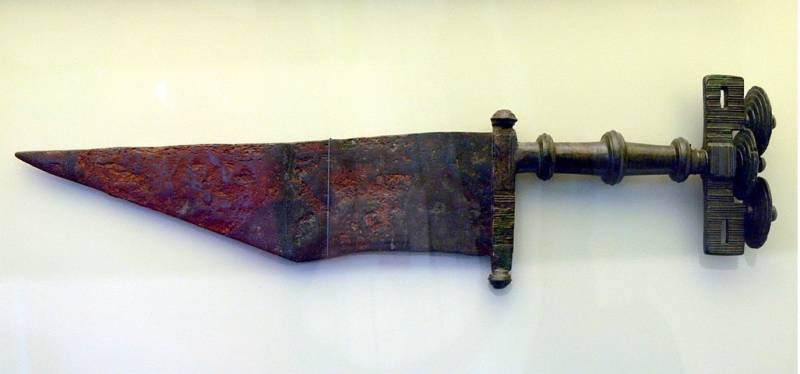
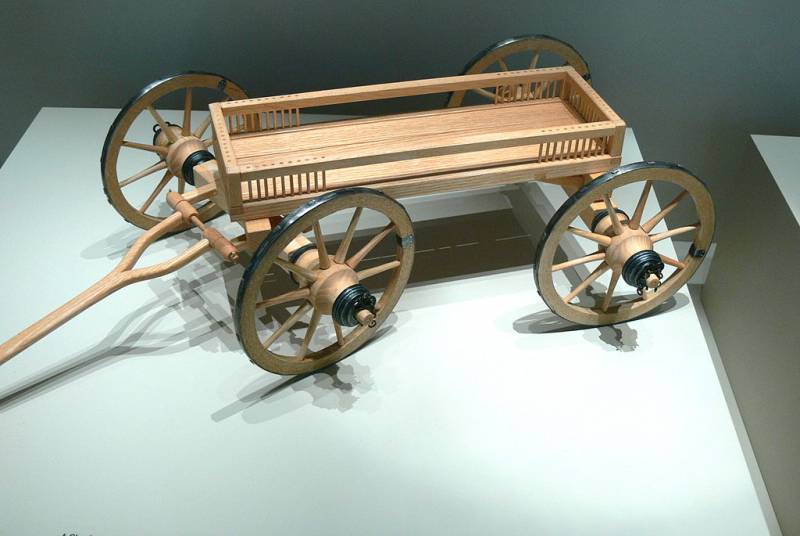
Information